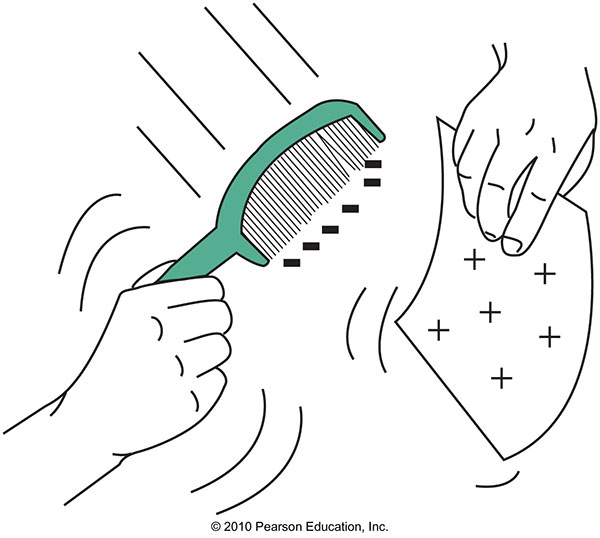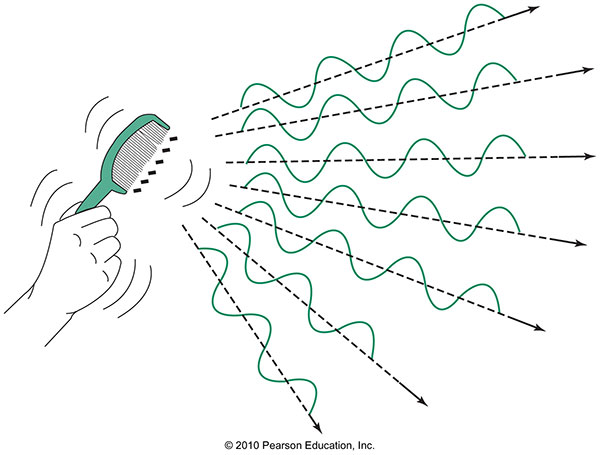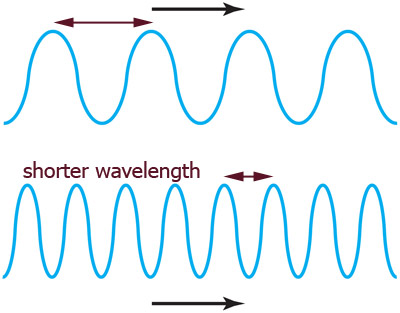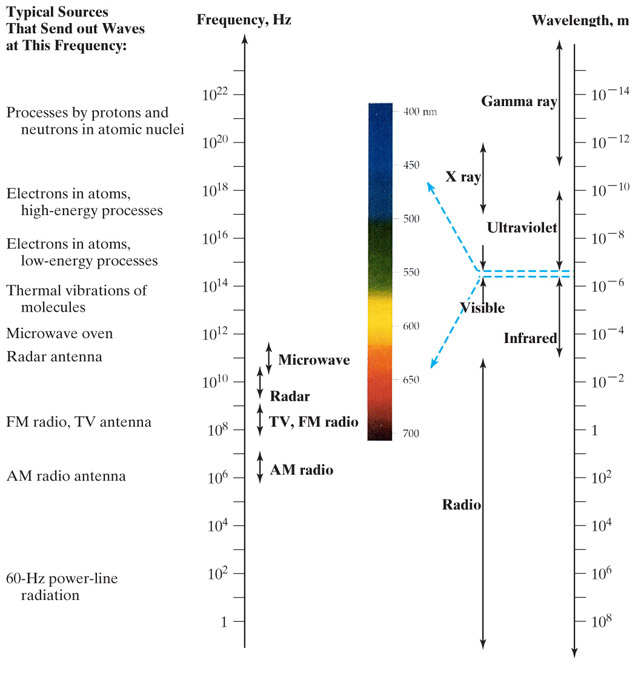Electro-magnetic waves and light
Electric field / Magnetic field
Whenever you shake (accelerate) some charged particles (or a magnet), nearby charged objects also shake:

We say that jiggling the charges
generates a disturbance in the electric field. Such a disturbance is called an electro-magnetic (EM) wave.

An EM wave also carries energy
Talking about waves

Wavelength = distance between crests in [m] (or [m / (wave)])
Wavespeed The speed that wave crests are moving in [m/s]
Sound: pressure waves in air travel at ~750 mi/hr = 343.2 m/s
Light: E-M waves travel at $2.998 \times 10^8$ m/s
[Lightning strikes an airplane]
Amplitude = maximum distance away from 'undisturbed' (yellow line) - units [m]
Frequency and wavelength
 Frequency =
# of waves passing a point in a time interval - [1/s] or [(cycles)/sec] or
[Herz] =[Hz]
Frequency =
# of waves passing a point in a time interval - [1/s] or [(cycles)/sec] or
[Herz] =[Hz]
What happens to the wavelength if you shake a slinky with a higher frequency??
It turns out that frequency$\equiv f$ and wavelength$\equiv \lambda$ are related to the speed$\equiv c$ of a wave like this: $$f\lambda=c$$
If all other things (amplitude and speed) are equal do you think a higher frequency wave has more or less energy than a low frequency wave??
Imagine a boat tied to a dock being tossed up and down by these two waves. Which wave is doing more work against gravity by lifting the boat more often??
Going back to heat, do you think charged atoms are shaking slower or faster when they are heated to a higher temperature?
Electromagnetic spectrum
Higher temperature = faster shaking = higher frequency waves.
